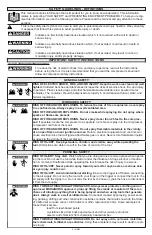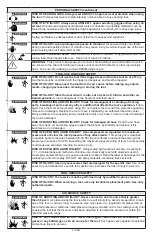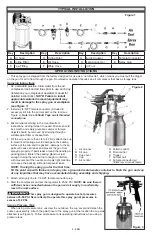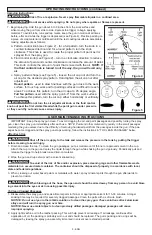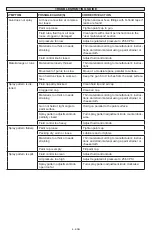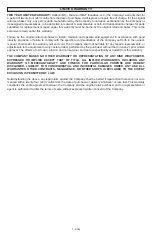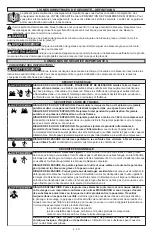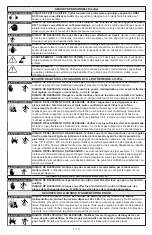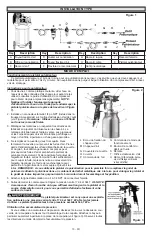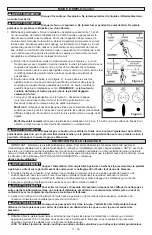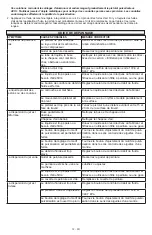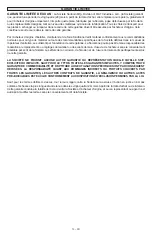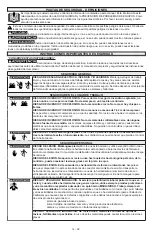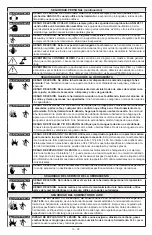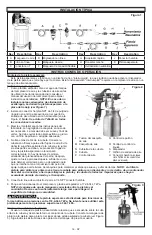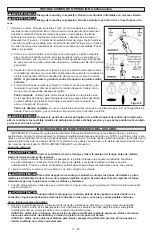
2 - ENG
SAFETY GUIDELINES - DEFINITIONS
IMPORTANT SAFETY INSTRUCTIONS
This manual contains information that is important for you to know and understand. This information
relates to protecting YOUR SAFETY and PREVENTING EQUIPMENT PROBLEMS. To help you recog-
nize this information, we use the following symbols. Please read the manual and pay attention to these
sections.
This is the safety alert symbol. It is used to alert you to potential personal injury hazards. Obey all safety
messages that follow this symbol to avoid possible injury or death.
Indicates an imminently hazardous situation which, if not avoided, will result in death or
serious
injury.
Indicates a potentially hazardous situation which, if not avoided, could result in death or
serious injury.
Indicates a potentially hazardous situation which, if not avoided, may result in minor or
moderate injury and/or property damage.
* SAVE THESE INSTRUCTIONS *
To reduce the risk of electric shock, fire, and injury to persons, read all the instructions
before using the tool. It is also recommended that you read the compressor manual and
follow all compressor safety instructions.
GENERAL SAFETY
RISK OF ELECTRIC SHOCK, FIRE, AND/OR INJURY. Keep the work area clean and well
lighted.
Cluttered benches and dark areas increase the risks of electric shock, fire, and injury
to persons. Place cleaning rags and other flammable waste materials in a secured metal
container. The container should be disposed of properly in accordance with local, state, and
federal regulations.
WORK AREA SAFETY
RISK OF FIRE AND/OR EXPLOSION. To reduce the risk of fire or explosion, never spray
in a confined area. Always spray in a well ventilated area.
RISK OF FIRE AND/OR EXPLOSION. Do not smoke while spraying. Do not spray where
sparks or flames are present.
RISK OF FIRE AND/OR EXPLOSION. Never spray closer than 25 feet to the compres-
sor!
If possible, locate the compressor in a separate room. Never spray into the compressor,
compressor controls or the motor.
RISK OF FIRE AND/OR EXPLOSION. Do not spray flammable materials in the vicinity
of an open flame or near ignition sources.
Motors, electrical equipment and controls can
cause electrical arcs that will ignite a flammable gas or vapor. Never store flammable liquids
or gases in the vicinity of the compressor.
RISK OF INJURY. Keep bystanders, children, and visitors away while operating the
tool.
Distractions are able to result in the loss of control of the tool.
PERSONAL SAFETY
RISK OF INJURY. Stay alert.
Watch what you are doing and use common sense when operat-
ing the tool. Do not use the tool while tired or under the influence of drugs, alcohol, or medica-
tion. A moment of inattention while operating the tool increase the risk of injury to persons.
RISK OF INJURY. Never point or spray toward yourself or anyone else or serious skin
or eye injury could occur.
RISK OF INJURY. Avoid unintentional starting.
Be sure the trigger is off before connecting
to the air supply. Do not carry the tool with your finger on the trigger or connect the tool to the
air supply with the trigger on. Do not carry the tool by the hose or yank the hose to disconnect
it from the air supply.
RISK TO BREATHING/INHALATION HAZARD. Always wear protective clothing and an
approved MSHA/NIOSH approved, properly fitting face mask or respirator if there is a
chance of inhaling anything that is being sprayed and when using tools that generate
dust.
Always work in a well ventilated area.
Some dust created by spraying, power sand-
ing, grinding, drilling and other construction activities contains chemicals known (to the State
of California) to cause cancer, birth defects or other reproductive harm. Some examples of
these chemicals are:
•
lead from lead-based paints
•
crystalline silica from bricks and cement and other masonry products
•
arsenic and chromium from chemically treated lumber.
RISK TO BREATHING/INHALATION HAZARD. Do not spray acids, corrosive materials,
toxic chemicals, fertilizers or pesticides.
Using these materials may result in death or seri-
ous injury.


